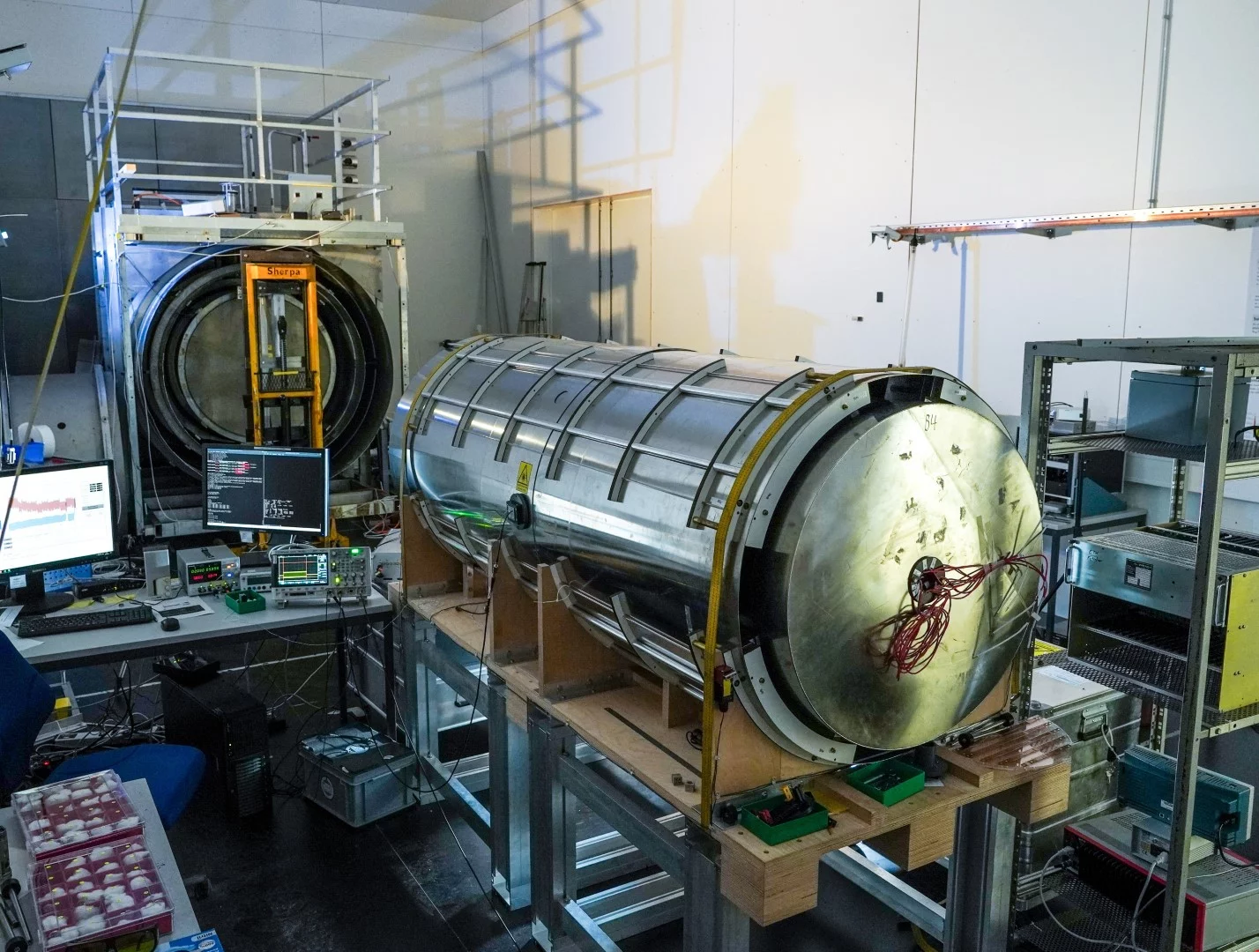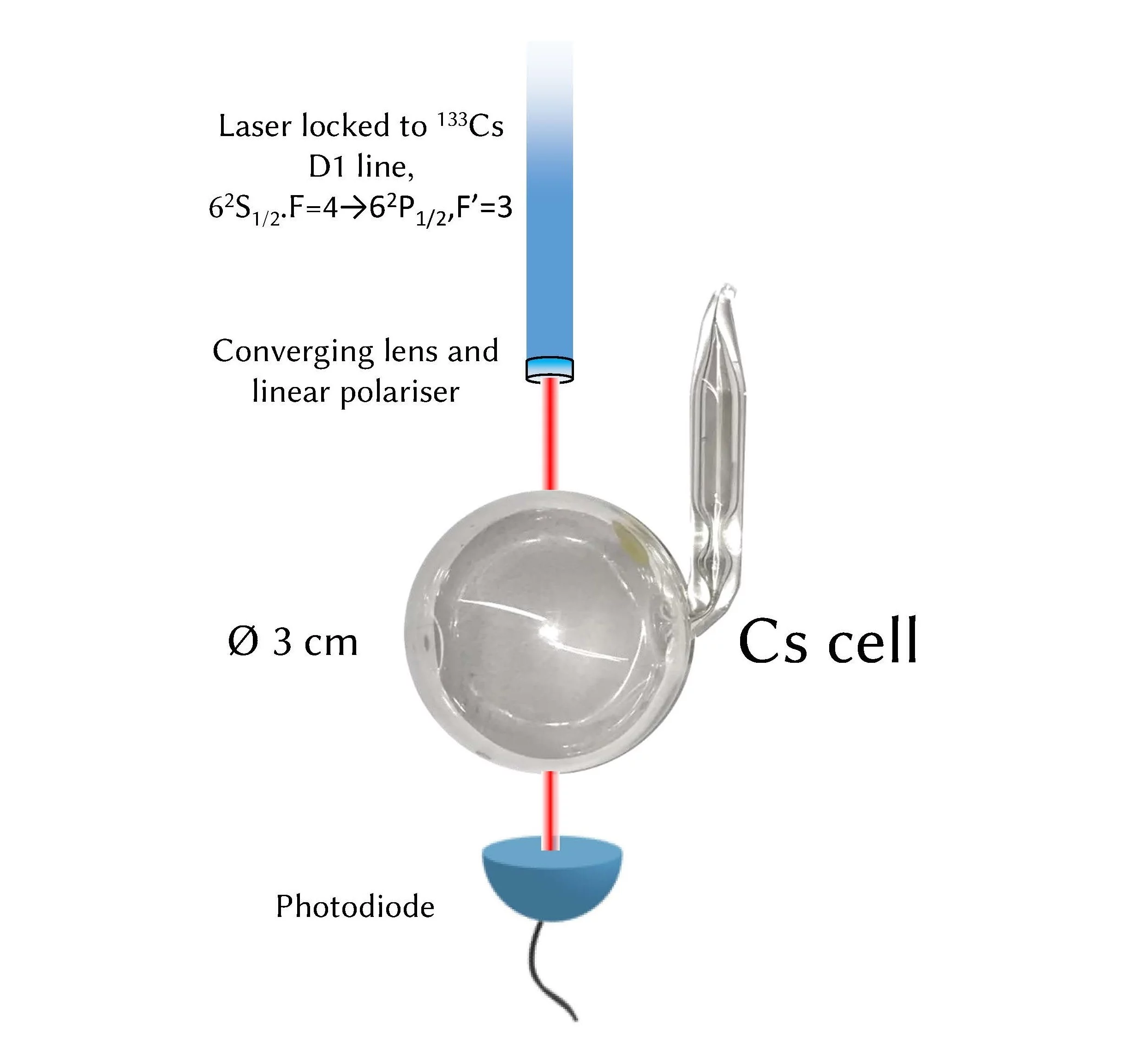Magnetometry Lab of the PSI UCN Group
High-precision magnetometry is a cornerstone of the new n2EDM apparatus and crucial to control systematic effects on an unprecedented precision level. In the magnetometry lab of the PSI UCN group, we develop optical magnetometers based on 133Cs atoms (Abel et al. 2020), 3He atoms (Abel et al. 2019), and on 199Hg atoms (Ban et al. 2018).

Background: Why do our experiments need magnetometers?
Our group conducts very sensitive fundamental physics experiments using ultracold neutrons (UCN). Our main experiment is dedicated to the search for an electric dipole moment (EDM) of the neutron (n2EDM Project). The EDM is a property of the neutron that is predicted by many theories but has not been found yet. It is a very weak interaction between neutrons and electric fields. In order to measure this effect with high sensitivity we have to monitor all other interactions of the neutrons with the environment in our experiment. It is very important to precisely measure and subtract those other interactions since they are orders of magnitude stronger than the electric interaction with neutron EDM. If not subtracted they would completely dominate our results and mask the weak traces of the neutron EDM. Such interactions are for example the rotation of the Earth which we have to compensate for in order to extract the right result. The by far largest challenge in this respect is the interaction of the neutrons with magnetic fields. For this reason, the UCN group at PSI together with partners develops very sensitive magnetic field measurement devices (magnetometers) which we use to monitor all relevant aspects of the magnetic field in our experiment. The magnetic field monitoring is so important that an improvement of the overall sensitivity of our search is not possible without improving the magnetic field monitoring.
Introduction to spin precession
The magnetometers we use are all based on the precession of particle spins. The spin of a particle is an angular momentum which is -for macroscopic particles- proportional to the speed at which the particle is rotating around an axis. In our experiments we use microscopic particles like atoms or neutrons which have a spin that is given by the rules of quantum mechanics. The particles we use have a magnetic moment in addition to their spin. A macroscopic analogy to this is a magnet that rotates around the axis of its magnetic field. If we place such a spinning magnet in an external magnetic field, there is a force that tries to align the magnet with the external field (exactly like in a compass). Because of the particle spin, this force never manages to align the magnetic moment with the external field. Instead the particle precesses around the external magnetic field. The frequency of this precession is proportional to the strength of the magnetic field. The stronger the force with which the magnetic field tries to align the magnet the faster the spin axes precesses around the magnetic field.
Optically pumped magnetometers
Our magnetometers use the spin precession frequency, the Larmor frequency, as a measure for the modulus of the magnetic field. In order to determine this frequency, the spins of all the particles must first be oriented in the same direction. To achieve this, we use optical pumping, a technique in which the angular momentum of circularly polarized light is transferred to the atoms. This method is highly efficient in orienting all atom spins in the same direction since the atoms absorb the light only if they are not perfectly oriented. If the atomic spin is parallel to the lights propagation direction, the atom cannot absorb the light any more since it is not possible to transfer more angular momentum to the atoms. This effect also allows us to detect the Larmor precession. When a magnetic field causes the atomic spins to precess, they periodically change their orientation with respect to the light. Consequently, the amount of light that is absorbed by the atoms is modulated at the Larmor frequency. The amount of absorbed light is easy to measure since it is missing in the light power measured after the interaction of the light with the atoms. We use laser beams for both optical pumping and the probing of the spin precession (Figure 2). Depending on the geometrical arrangement of the light beams and the magnetic field it is possible to do both processes with the same beam.
Goals
Magnetic fields are so important in our experiment that we have to achieve a list of goals with our magnetometers:
- We have to avoid magnetic contamination of any component that is installed in our experiment. Therefore, all parts of the experiment are tested with a special test setup before installation. In this setup the parts are moved passed a very sensitive magnetometer which shows a characteristic signal if the part is magnetized.
- We ensure a homogeneous magnetic field before the experiment starts. This is important since the statistical uncertainty of the measurement increases if the field is not homogeneous enough. An array of optically pumped magnetometers gives us detailed information about the magnetic field distribution which is used to correct for any inhomogeneity.
- We detect changes in the magnetic field in which we investigate the neutrons in order to correct the results accordingly. This is done by filling the same volume in which the neutrons are stored with Hg atoms. After polarizing the Hg atoms in a separate chamber their spin precession can be probed with an ultraviolet laser beam. The resulting magnetic field measurement is our main reference to which the signal to the neutrons is compared.
- Important systematic uncertainties in the experiment are linked to certain magnetic field inhomogeneities. We thus monitor the magnetic field distribution in our experiment with the same array of optically pumped magnetometers used to homogenize the field before the experiment starts. The array measures the magnetic field distribution at any time during the experiment which allows us to correct for the systematic shifts that depend on this distribution.



